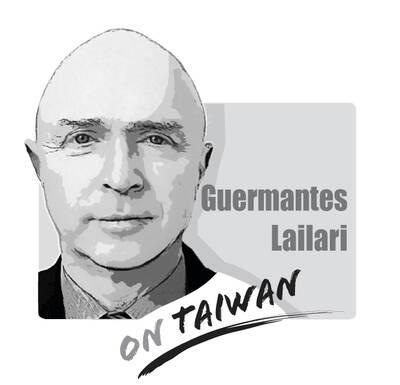Nanotronics, housed in Building 20, 63 Flushing Avenue, boasts all the familiar features of a Brooklyn-based business: exposed brick and wood, steel stairs, giant iron beams and a Steinway piano. Nanotronics CEO Matthew Putman is a poet, pianist and film producer, while his chief operating officer James Williams is a much-exhibited artist. Yet Nanotronics is a science and technology company that manufactures real things, not just ideas.
Think of factories and you tend to think of mass and mess: crowds of people doing low-paid work amidst noise and pollution. Nanotronics is the opposite: There are only a handful of people around and everything is neat and tidy — and pin-drop quiet (except, presumably, when the Steinway is played).
Nanotronics specializes in applying artificial intelligence (AI) to the manufacturing process in order to eliminate defects and reduce waste. The company designs and produces machines that can detect minuscule variations in products and processes. This means that it depends on having researchers and technicians working side by side. It also produces what it calls “Cubefabs,” modular chip manufacturing facilities that Nanotronics ships around the world.

Illustration: Yusha
“We like to build things in city centers,” Williams said.
Building 20 is part of a back-to-the-future move for the Brooklyn Navy Yard — a 121 hectare stretch of Brooklyn’s waterfront with a panoramic view of New York’s harbor and lower Manhattan. Starting during the US Civil War, the Navy Yard designed and manufactured ships for the US Navy. (That giant iron beam in Nanotronics’ building came from one of the first iron-clad ships.) At its height during World War II, the yard employed about 70,000 people. However, by the 1970s it had shrunk into a mere shell of its former self with 200 employees and the infrastructure decaying. Today it hums again: The yard is home to more than 450 businesses, many in manufacturing, and employs more than 11,000 people, thanks in part to the hard work and imagination of the Brooklyn Navy Yard Development Corporation and a little-noticed revolution in manufacturing.
Industry and cities were originally intertwined. Sometimes industrialists build factories in big cities such as London to get access to workers. Sometimes they built their factories in resource-rich backwaters such as Manchester that then grew into metropolises. However, there were two problems with this mixing. Factories belched out pollution: German philosopher Friedrich Engels described Manchester, where he owned a factory, as a place of “filth” and “ruin” and as “hell on earth.” The arrival of the assembly line also meant that factories got ever larger: Business magnate Henry Ford’s River Rouge complex, built in 1917 to 1928, measured 2.4km wide by 1.6km long, with 93 buildings and a combined total of 1.49 million square meters of factory floor space.
The result was a great detwining of cities and industry. Factory owners moved their factories to suburbs and exurbs in search of cheaper land. City planners deliberately drove smaller factories out of town in a bid to get rid of the mess and pollution: Brooklyn, for example, rezoned much of the waterfront for residential rather than industrial use. From the 1980s onward, companies took advantage of globalization to offshore manufacturing production to the emerging world.
There has been much talk recently about the “reshoring” of manufacturing in response to worries about the security of supply chains, not least the supply of semiconductors. A less noticed development is the return of manufacturing to cities.
Some of the considerations that drove factories out of cities no longer apply. Old-fashioned factories are reducing their ecological footprint by using more efficient boilers and heat pumps while new-fangled factories, like Nanotronics’ one in Brooklyn, are cleaner than the average service company, because nanotechnology and dust do not mix. Other considerations are beginning to operate in the other direction: Innovative manufacturing companies need to recruit highly skilled people who understand AI, 3D printing and process control.
Some manufacturers are experimenting with vertical rather than horizontal factories. (Most urban factories were vertical in the 19th century, because their machines relied on a single power source in the basement; they only began to sprawl with the development of individual electric motors in the 1920s.) Volkswagen’s assembly plant in Dresden, Germany, is six stories high and incorporates the city’s tram network as part of its distribution system. Companies also use distributed production to link smaller factories together, combining the advantages of economies of scale with human size.
There are good reasons for thinking that the return of manufacturing to its original home would be a boon for cities and manufacturing. Cities responded to deindustrialization by focusing on business services, knowledge work, the creative arts, luxury housing or just plain consumption. However, this “winner take all urbanism” destroyed the middle classes that once provided cities with their ballast and character. Urban studies theorist Richard Florida, who grew famous celebrating “the rise of the creative class,” with their lofts, bicycles and facial hair, has had second thoughts.
Cities with the highest proportion of creative workers also have the highest level of inequality, he said, contrasting today’s bifurcated urban world of well-paid knowledge workers and minimum wage service workers with the middle-class Newark, New Jersey where he grew up.
It would be an exaggeration to argue that reindustrialization would restore that middle-class ideal: The likes of Nanotronics employ small numbers of highly skilled workers. Hwoever, it might do something: Brompton Bikes, which does its manufacturing in West London, provides jobs for skilled artisans as well as engineers, designers and managers. The Brooklyn Navy Yard Development Corporation recruits local people and trains them for jobs. Expanding the diversity of jobs available in cities that are increasingly divided between the rich and the poor can only be a good thing.
There are obvious benefits to putting manufacturing companies into cities. There is the benefit of being close to consumers: Brompton’s folding bikes solve a quintessentially urban problem, shortage of space, so the company is better off in London than anywhere. There is the benefit of being close to high-quality universities: Warwick University and Sheffield University have centers for the advanced study of manufacturing which collaborate closely with local companies. There are also hidden benefits.
Gary Pisano and Willy Shih of Harvard Business School said that separating research and development from production is bad for innovation, because it makes the “material intelligence” that you get from handling things more difficult to transfer.
CEOs tend to pay attention to functions that are physically close to them: The further manufacturing is located from the head office, particularly if it is off in another country, the less attention the man or woman in charge will pay to it, Jeffrey Pfeffer of Stanford Business School said.
Bringing back manufacturing might help to address both problems.
This is not to say that all manufacturing should be reurbanized any more than it should be reshored: Some efficiencies are undoubtedly to be gained by putting production in the suburbs or Malaysia. However, companies need to think harder about where they put production rather than just assuming that manufacturing is incompatible with urban life. Cities also need to think harder about their instinctive preference for “clean” offices or theaters over “dirty” factories. For once, this is a Brooklyn trend that the rest of the West would do well to follow.
Adrian Wooldridge is the global business columnist for Bloomberg Opinion. A former writer at The Economist, he is author of The Aristocracy of Talent: How Meritocracy Made the Modern World.
A response to my article (“Invite ‘will-bes,’ not has-beens,” Aug. 12, page 8) mischaracterizes my arguments, as well as a speech by former British prime minister Boris Johnson at the Ketagalan Forum in Taipei early last month. Tseng Yueh-ying (曾月英) in the response (“A misreading of Johnson’s speech,” Aug. 24, page 8) does not dispute that Johnson referred repeatedly to Taiwan as “a segment of the Chinese population,” but asserts that the phrase challenged Beijing by questioning whether parts of “the Chinese population” could be “differently Chinese.” This is essentially a confirmation of Beijing’s “one country, two systems” formulation, which says that

“History does not repeat itself, but it rhymes” (attributed to Mark Twain). The USSR was the international bully during the Cold War as it sought to make the world safe for Soviet-style Communism. China is now the global bully as it applies economic power and invests in Mao’s (毛澤東) magic weapons (the People’s Liberation Army [PLA], the United Front Work Department, and the Chinese Communist Party [CCP]) to achieve world domination. Freedom-loving countries must respond to the People’s Republic of China (PRC), especially in the Indo-Pacific (IP), as resolutely as they did against the USSR. In 1954, the US and its allies
Indian Prime Minister Narendra Modi arrived in China yesterday, where he is to attend a summit of the Shanghai Cooperation Organization (SCO) with Chinese President Xi Jinping (習近平) and Russian President Vladimir Putin today. As this coincides with the 50 percent US tariff levied on Indian products, some Western news media have suggested that Modi is moving away from the US, and into the arms of China and Russia. Taiwan-Asia Exchange Foundation fellow Sana Hashmi in a Taipei Times article published yesterday titled “Myths around Modi’s China visit” said that those analyses have misrepresented India’s strategic calculations, and attempted to view
When Chinese President Xi Jinping (習近平) stood in front of the Potala Palace in Lhasa on Thursday last week, flanked by Chinese flags, synchronized schoolchildren and armed Chinese People’s Liberation Army (PLA) troops, he was not just celebrating the 60th anniversary of the establishment of the “Tibet Autonomous Region,” he was making a calculated declaration: Tibet is China. It always has been. Case closed. Except it has not. The case remains wide open — not just in the hearts of Tibetans, but in history records. For decades, Beijing has insisted that Tibet has “always been part of China.” It is a phrase